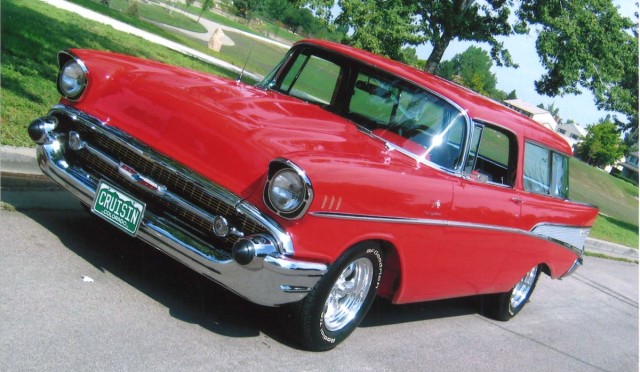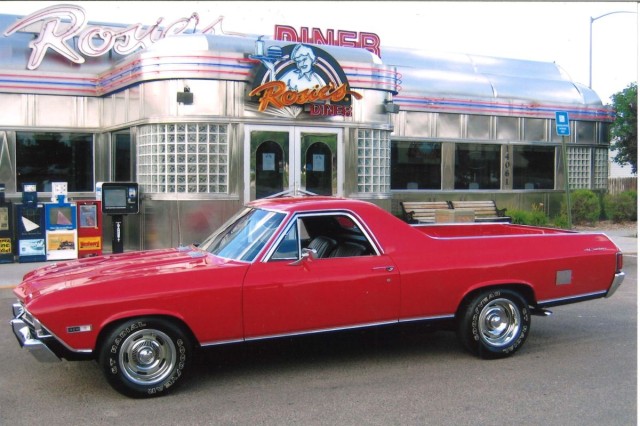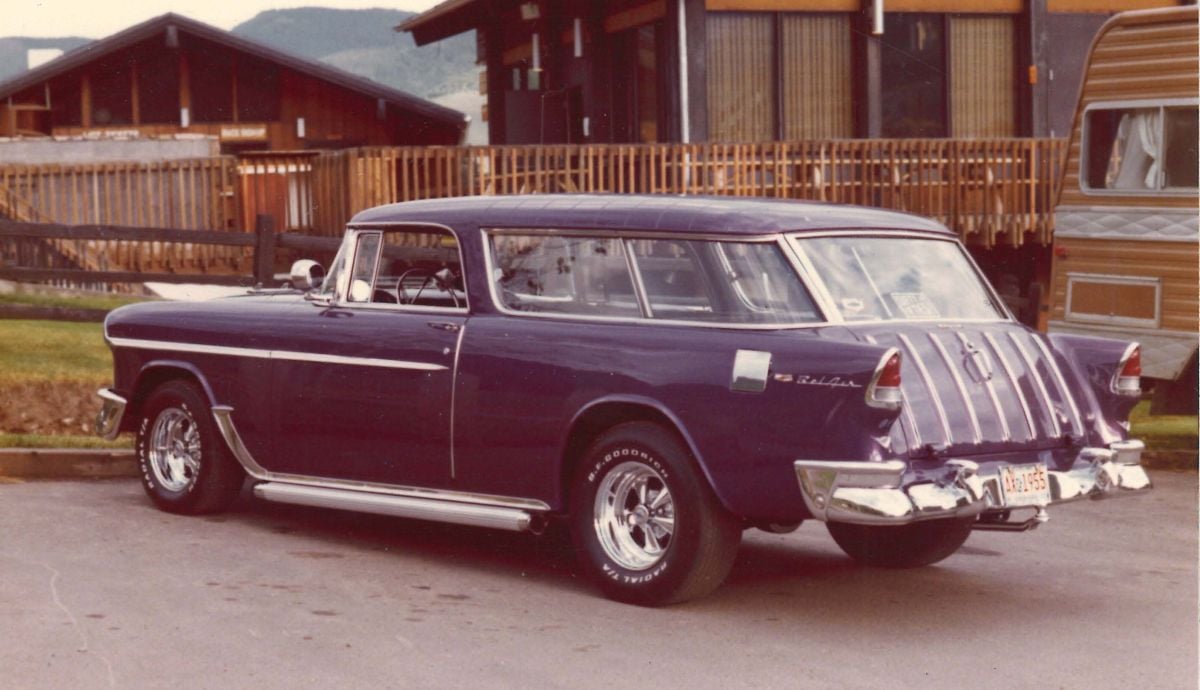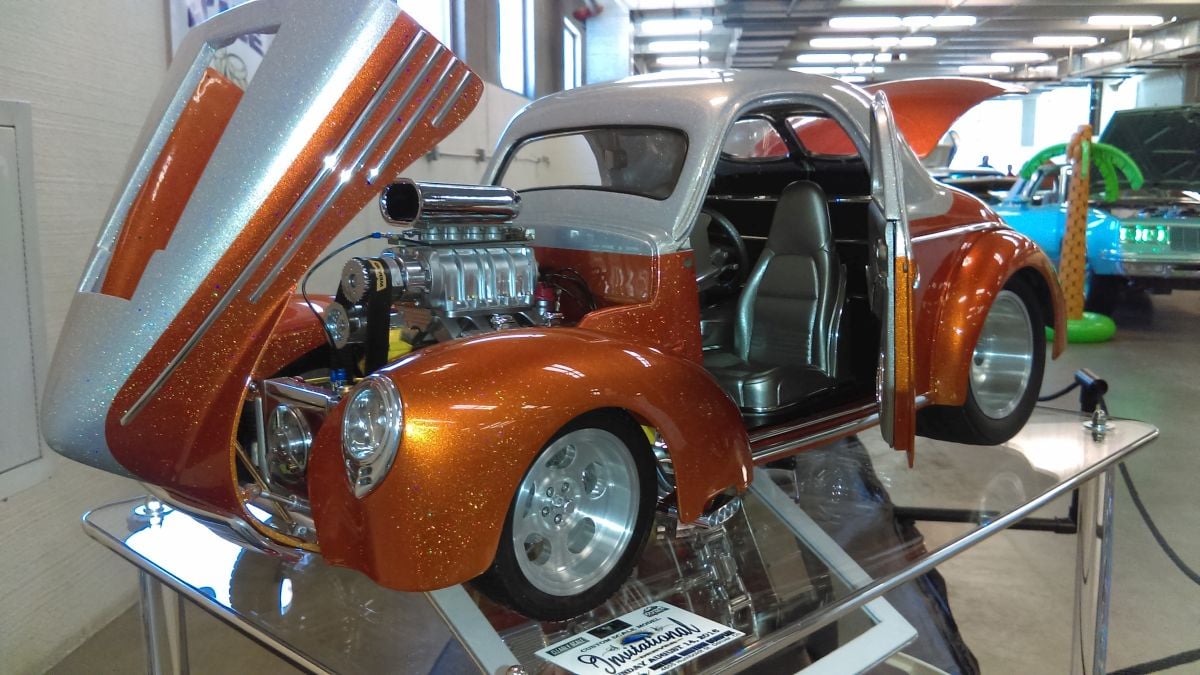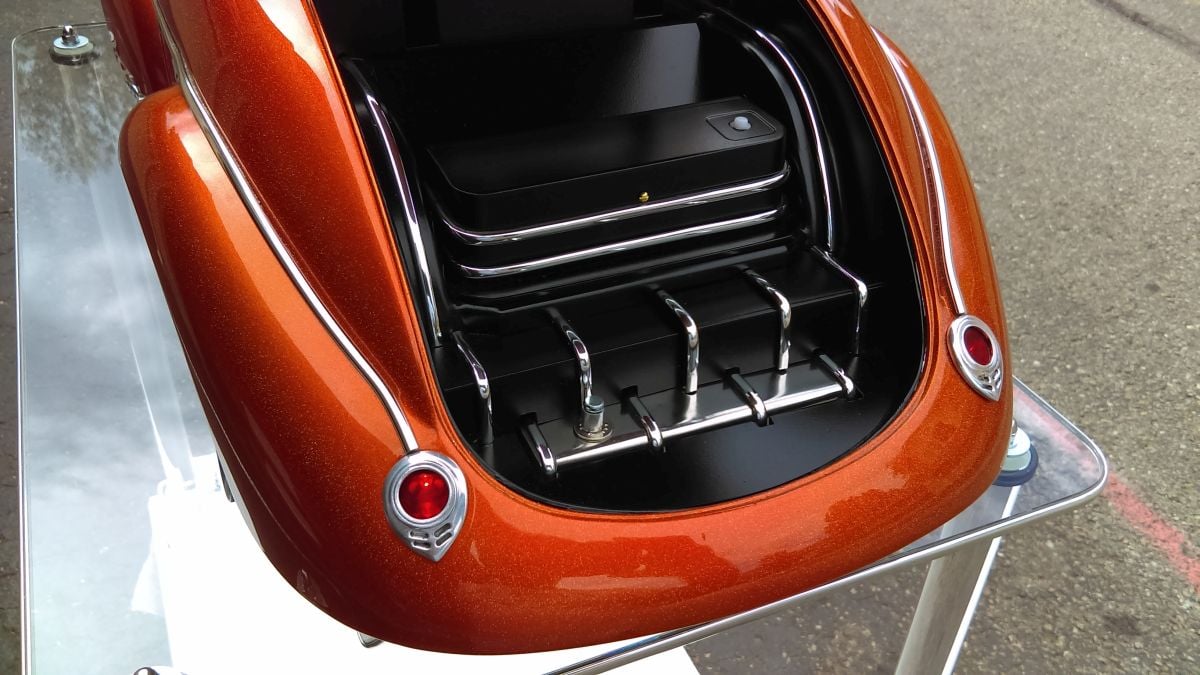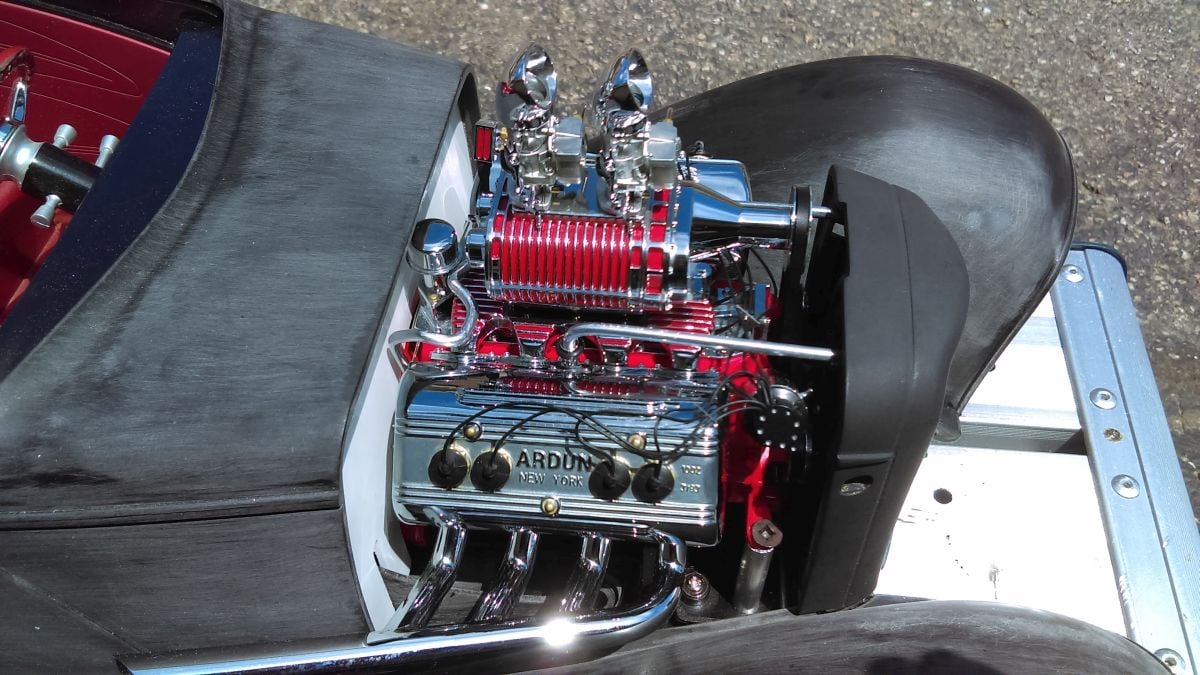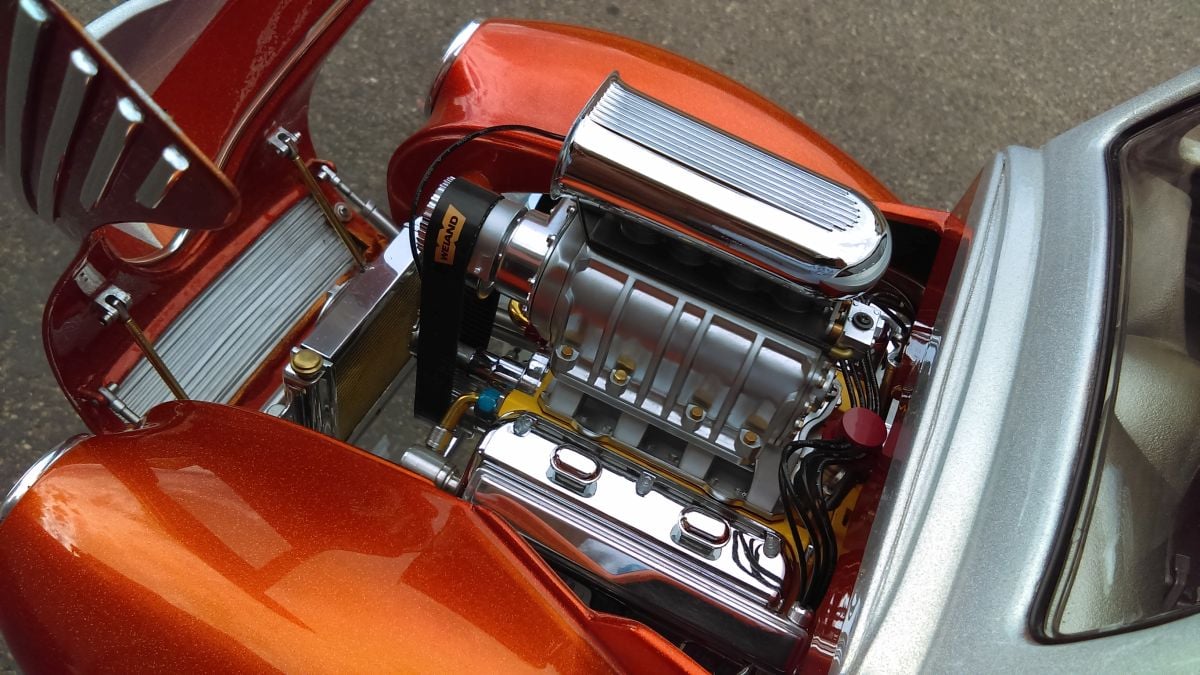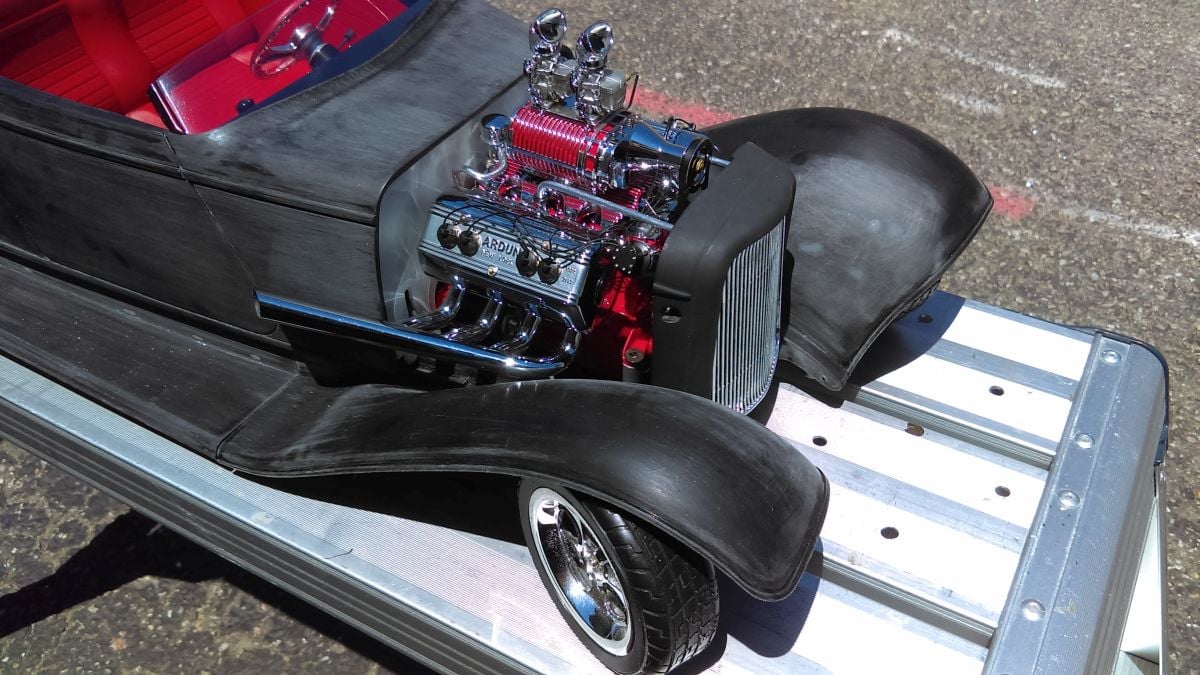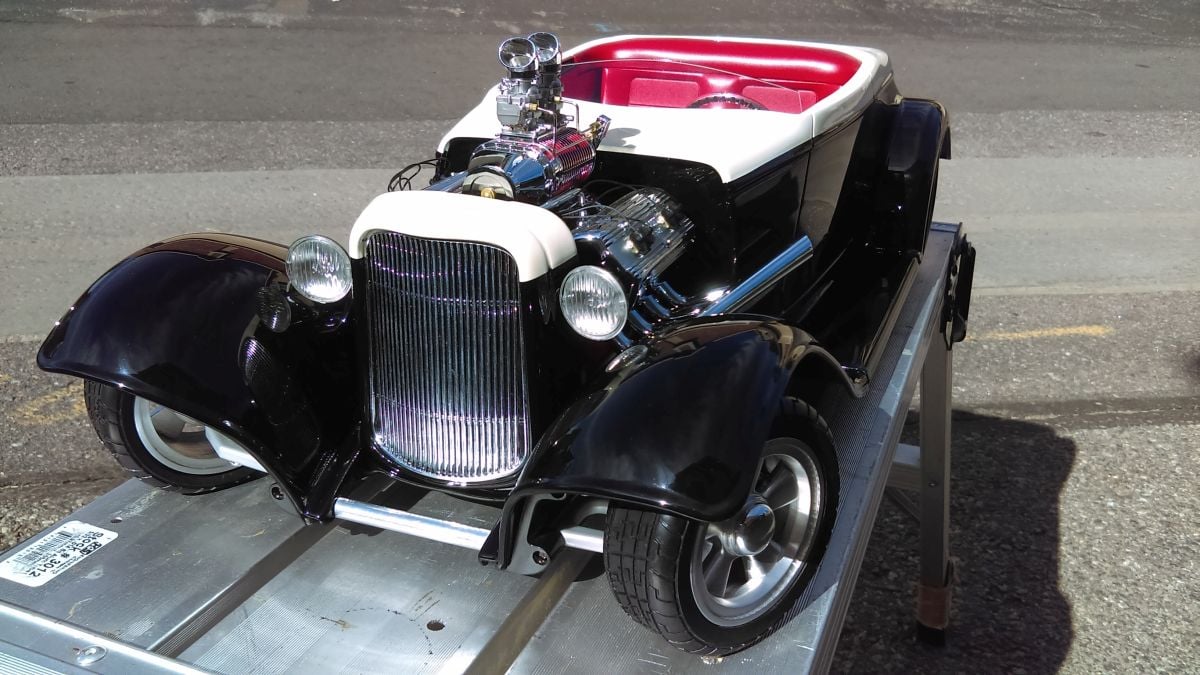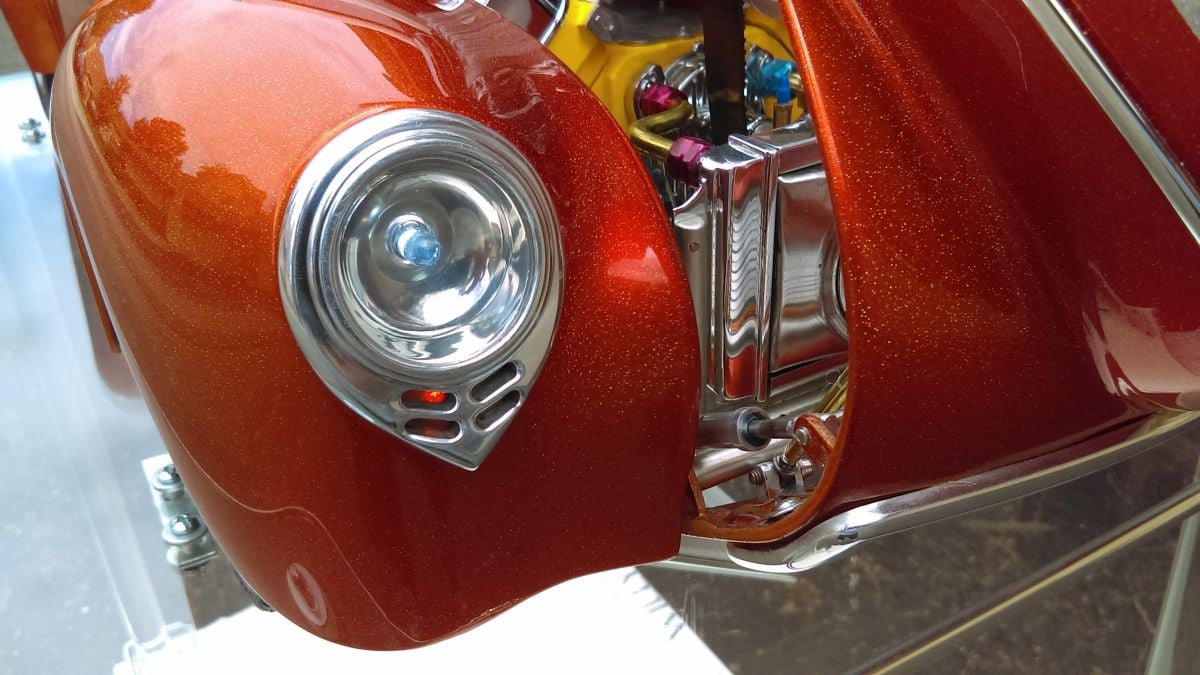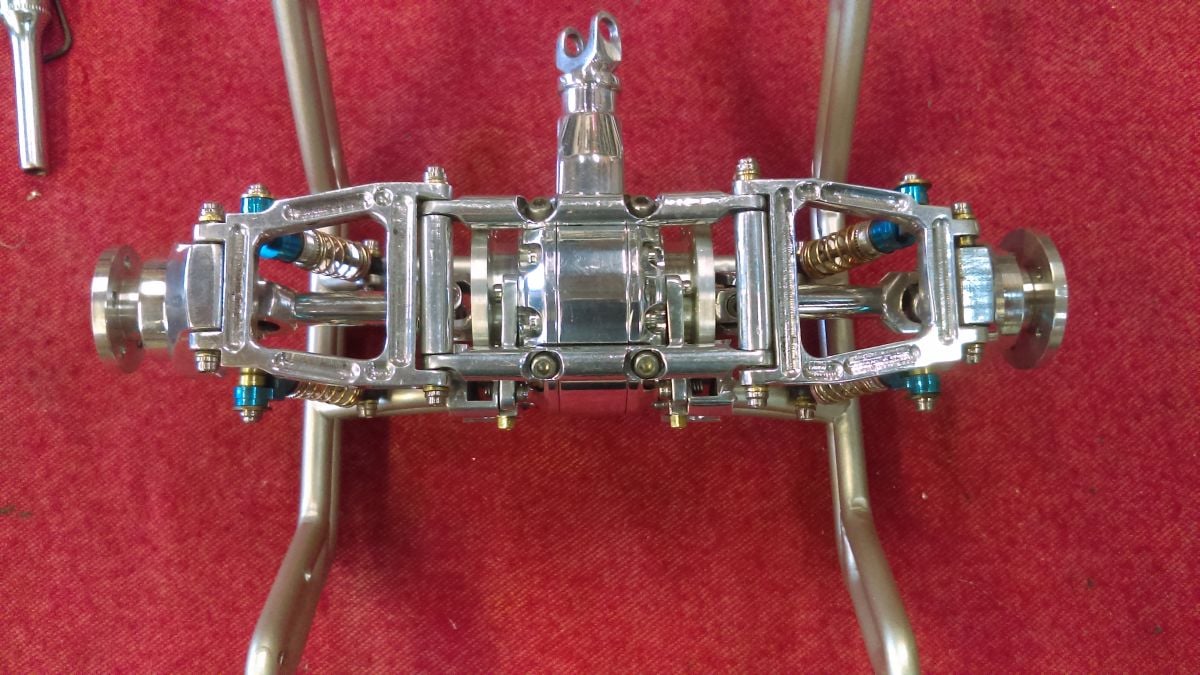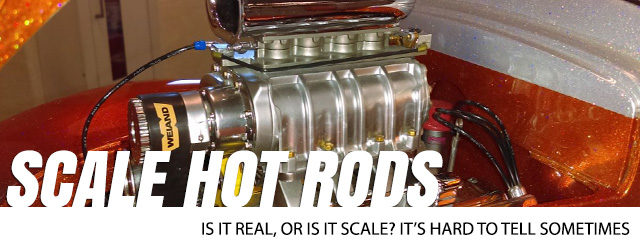 [1]What does one do when they (supposedly) get too old to work on full-size cars? Some guys, like Ron Bement of Denver, Colorado, build scale model engines that actually run. Other guys like Henry Martinez of Denver, Colorado, build 1/8th scale models. Henry confesses that he’s now 68 years of age, but the Viet Nam vet still has the car bug in him and probably will for life. He admitted he’s unable work on full-size cars any longer, but has always been a car guy and has built and owned mostly Tri-Five Chevys [2] his entire life.
[1]What does one do when they (supposedly) get too old to work on full-size cars? Some guys, like Ron Bement of Denver, Colorado, build scale model engines that actually run. Other guys like Henry Martinez of Denver, Colorado, build 1/8th scale models. Henry confesses that he’s now 68 years of age, but the Viet Nam vet still has the car bug in him and probably will for life. He admitted he’s unable work on full-size cars any longer, but has always been a car guy and has built and owned mostly Tri-Five Chevys [2] his entire life.
Henry’s current ride is a gorgeous 1957 Chevy Nomad. Alongside that in his garage is a 1968 SS 396 El Camino, and both received body-off restorations some years ago. The ‘68 SS El Camino was purchased around 1980, and he finished it in 1985. He’s proud to say that the Elco only has 63,000 original miles on it.
Prior to the Nomad and Elco, Henry built and owned a 1955 Nomad that he kept for 26 years. The Nomad was painted Mopar Plum Crazy purple when he bought it, but in late 1977, he changed its hue to orange. He purchased the current Nomad from a friend in the mid ‘90s, and was able to finish it some time in 2005.
Henry’s Daily Driver
The Nomad’s engine is a basically stock 350ci with aluminum heads. It is, however, outfitted with an ‘86 Corvette tuned port fuel injection and behind that is a Turbo 400 transmission with a shift kit, built by Don Spalding. To turn the rear tires, a ‘69 Corvette independent rearend with 3.73 gears was installed, and Corvette disc brakes occupy all four corners. It was painted Guard’s Red in the late 1980’s by Argood’s Auto Body. Larry McDaniel did the interior in leather after Henry custom built a center console, added Dakota Digital [5] gauges, and a killer Alpine Stereo system.
Left: Henry's '55 Nomad, which was sold to acquire the '57 that didn't have any interior, but did come with a Corvette rear and disc brakes on all corners . Right: Henry posing with a sign before the interior was done. He said he earned $15.00 toward the interior because of that sign!
The El Camino’s engine is the original 396ci, but has been rebuilt by Colorado Custom Machine. It has a 1968 Corvette Tri-power on it, so it looks like a 427ci Corvette engine. Behind that is a real Doug Nash four-speed, which is super rare these days. Inside is a factory tach and gauges, factory A/C, and the car has the power disc-brake option, which was rare in a ‘68. Larry McDaniel did the interior, and Henry’s friend Clifford Lipke, painted the El Camino Super Red.
Left: The first scale Willys built. PPG automotive paint covers the car. Right: Henry's models are fully built, including trunk and interior detailing.
Henry enjoys taking either vehicle to local shows along with his “toys.” To keep his passion for cars going, his hobby is building large scale models from old used 1/8th scale R/C cars. He takes them completely apart and throws away the motor that originally drove the rear wheels. He then makes them look like they were model car kits that could be purchased from hobby stores. Henry not only builds them, but actually has parts machined out of billet aluminum, and paints them with modern two-stage automotive paints.
 [10]
[10]Full billet space frame chassis includes battery box, brake master cylinder, independent front suspension, engine and transmission mounts, and complete rearend. U-joints actually work, and billet wheels are held on with scale lug nuts.
Hand Crafted
Nearly everything is machined of billet aluminum: the frame, wheels, rotors and calipers, grill, headlights and taillights, working rack-and-pinion steering, stainless-steel gas tank, wheel rims, etc. If it’s metal on a real car, it’s metal on Henry’s models. The parts are machined by good friend Kenny Wild.
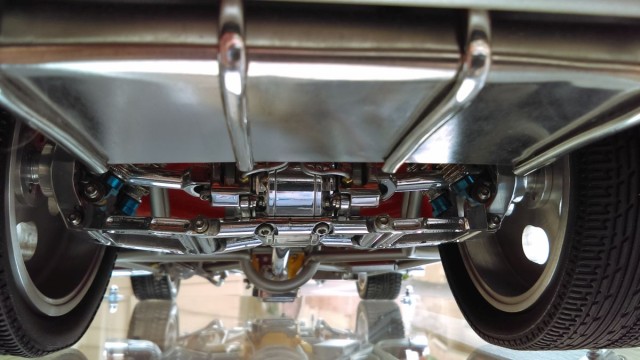 [11]
[11]Scale…or real? The gas tank is stainless steel. The rearend is a work of art with U-joints, brakes, and A-arms. They all work as in a real car. Rims are scale and machined from billet.
Henry cuts the hoods open and put 1/6th scale engines in them, builds firewalls, and makes the doors open in “suicide” fashion. All necessary trim is make of billet aluminum, including the grill, headlights, taillights, custom one-off billet rims, and the custom-made rotors and calipers. In the case of one Willys, he built a complete scratch-built frame with real working rack-and-pinion steering, a working suspension, U-joints, ball joints, driveshaft, independent rear suspension, and even a radiator and stainless steel gas tank.
Left: A blown Ardun engine in the '32 Deuce certainly looks real. Note correct wiring. Right: If you didn't know any better at this point, you'd swear the supercharged engine in the Willys is real. Note unique tilt hood, one of Henry's designs
The 1/6th scale engines are from GMP that he’d bought some 10 years ago. They cost $200.00, and are all metal, unlike some 1/6th scale engines that are mostly plastic.
Left: The Duece before paint. Yes, that's real automotive primer! Right: The Deuce, two-toned and nearly finished.
The 1941 Willys RC car came out about 15 years ago, and Toys R Us and Walmart carried them for a while. Henry found one at a swap meet. The 1932 Ford is at least 10-years-old if not older. He found this one at a toy show. The Metallic Orange and Silver 1941 Willys took two years to build, and Henry has about $4,500.00 invested in the model. The Willys is painted with a special mix PPG combination Ford Orange with an off white color called “Milk Shake.” The ‘32 is Midnight Black with the same “Milk Shake” accent color, which is also a PPG automotive paint. Henry’s friend, Kenny, was a body and paint man for 30 years before he retired and got into doing CNC machining.
Left: The headlights use peanut bulbs, and the lenses are made from CD cases. Middle: Rear suspension in one of Henry's Willys. The U-joints work and the wheels have lug nuts to hold them on. Right: Close up look at the suspension in the Willys.
Once he learned what Henry was doing, he volunteered to paint the models using automotive paint. Henry did the interiors and painted smaller parts and trunk areas. The tires came from other big-scale RC cars, and Kenny machined the rims. The wheels and tires unbolt just like a real car, with five lug nuts on each wheel. During these builds, the firewalls, inner fenders, floors, and the doors were custom made to operated correctly. Orignally, the hoods never opened, so he built two different versions of a tilt front end. The headlights and taillights are wired, and lenses are made from CD cases.
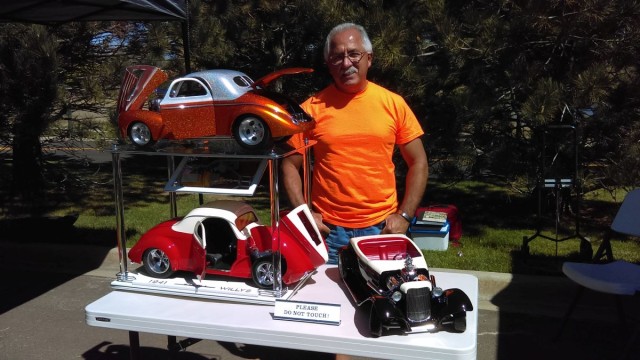 [19]
[19]Henry posing at the rear of his display of two Willys’ and a ’32 Ford roadster. Are there more models waiting to be done. Certainly!
Works of art? Of course they are! Henry is not done building large scale models either. We asked what the future holds for him, “I have another Willys and another ‘32 Ford, which will be future projects. I was also thinking about building a gasser replica of either Big John Mazmanian or Stone, Woods and Cook with the other Willys, but I don’t know yet. I think that would be a cool project in that big scale. A large scale ‘57 Chevy is available, but it isn’t 100-percent accurate. It would make a good gasser-style car, but even then, it still isn’t perfect! After all, these are intended to be RC cars and not detailed models.”
